Harvest Finance
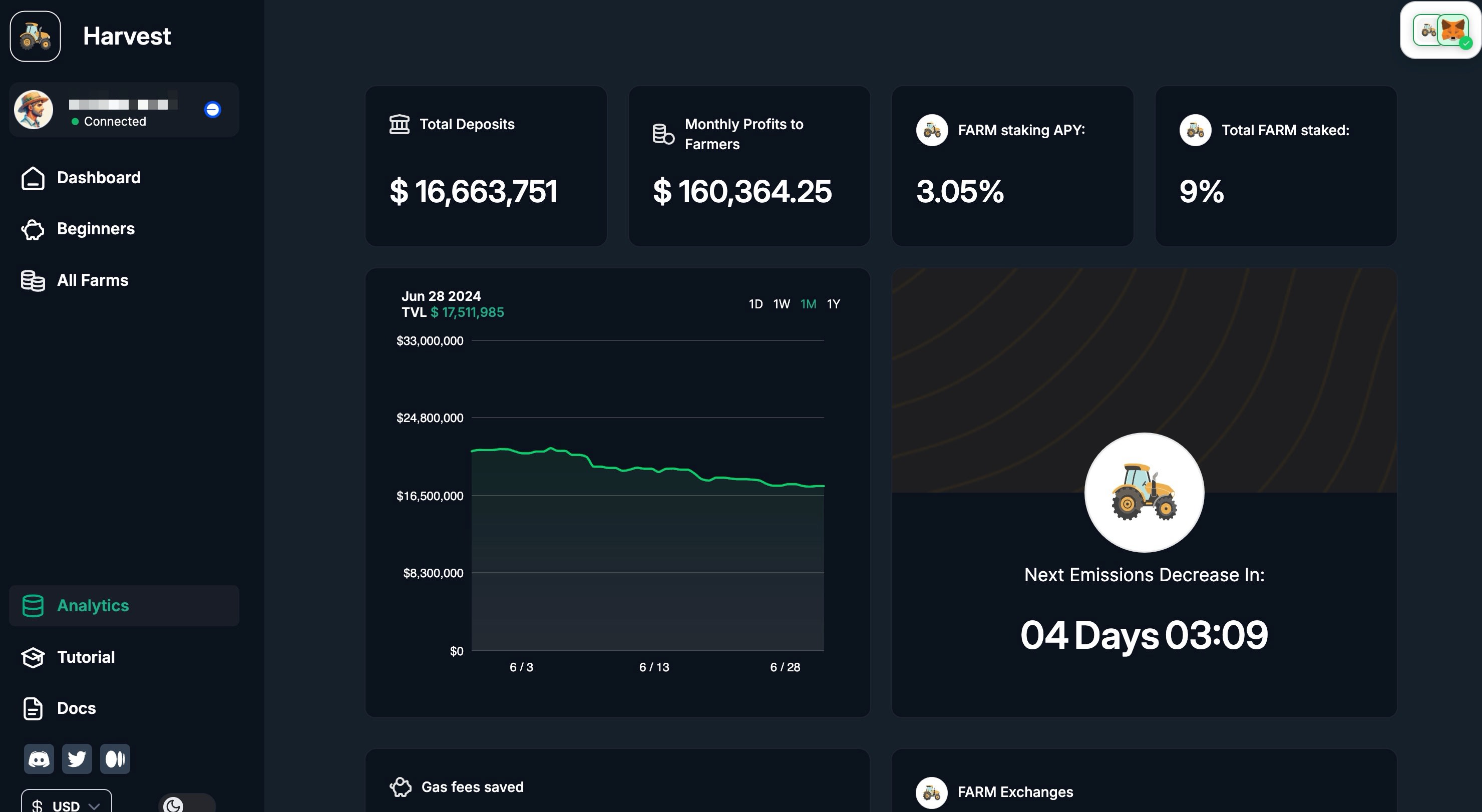
TLDR;
Harvest Finance is a protocol which auto compounds yield-generation deposits.
This is similar to Yearn Finance.
The auto-compounding benefits users by a) reducing the number of manual steps that user typically needs in order to compound the yield from their deposits; b) reduces the gas fees for the user by batching smart contract calls.
Like other protocols, there are rewards issued to those who deposit in the form of their own native token, $FARM, which represents a kind of profit-sharing of the fees generated by the protocol.
Differences and Benefits
Most DeFi protocols are complicated, both conceptually and in workflow.
For the most part, Harvest is easier to understand conceptually (although as you'll see it still has some nuances); but where it shines is in the workflow (once you understand what you are doing).
The UX simplifies the overall understanding and metrics compared to many other protocols.
This is one area that, as DeFi becomes more mainstream, will become more and more important and likely a differentiator.
In fact, the more I started to understand how it actually worked, the more I pulled out of some original DeFi products to replicate similar strategies in Harvest.
I also found the community very helpful and knowledgeable about DeFi.
I asked alot of questions, not only about Harvest, but about DeFi concepts in general, and the people in the Discord were very helpful.
The 'Getting Started' Experience was also easier than with other protocols.
A simple version is, in fact, baked in as a unique User Journey which I found unique to the DeFi products to date; I think long-term this will give them advantage in terms of on-ramping more people.
-
Strong visual UX
-
Automation and Streamlining Experience
-
Strong 'Getting Started' Experience
Challenges and Drawbacks
I had been using Zapper as my Portfolio Management tool.
And many Harvest Farms plus their yields sometimes didn't show up. As if today, June 2024, I could only see Farms on Polygon.
This is a dependency on Zapper, not Harvest; but is largely a function I think of their usage since Zapper is likely incentivized by demand.
The other is fully understanding from the get-go the mechanics.
This is not a difference from other protocols: they all have complexity.
But it is something that will need extra effort (hopefully I help to explain here).
Or this could change based on what I use for my tools Portfolio Management in DeFi.
Getting Started
For those who want to get started with some hand holding, Harvest Finance has a good process with much to appreciate.
The "getting started" UI simplifies many of the things involved with earning yield.
Here's what the "For Beginners" page looks like:
the "For Beginners" page looks like:
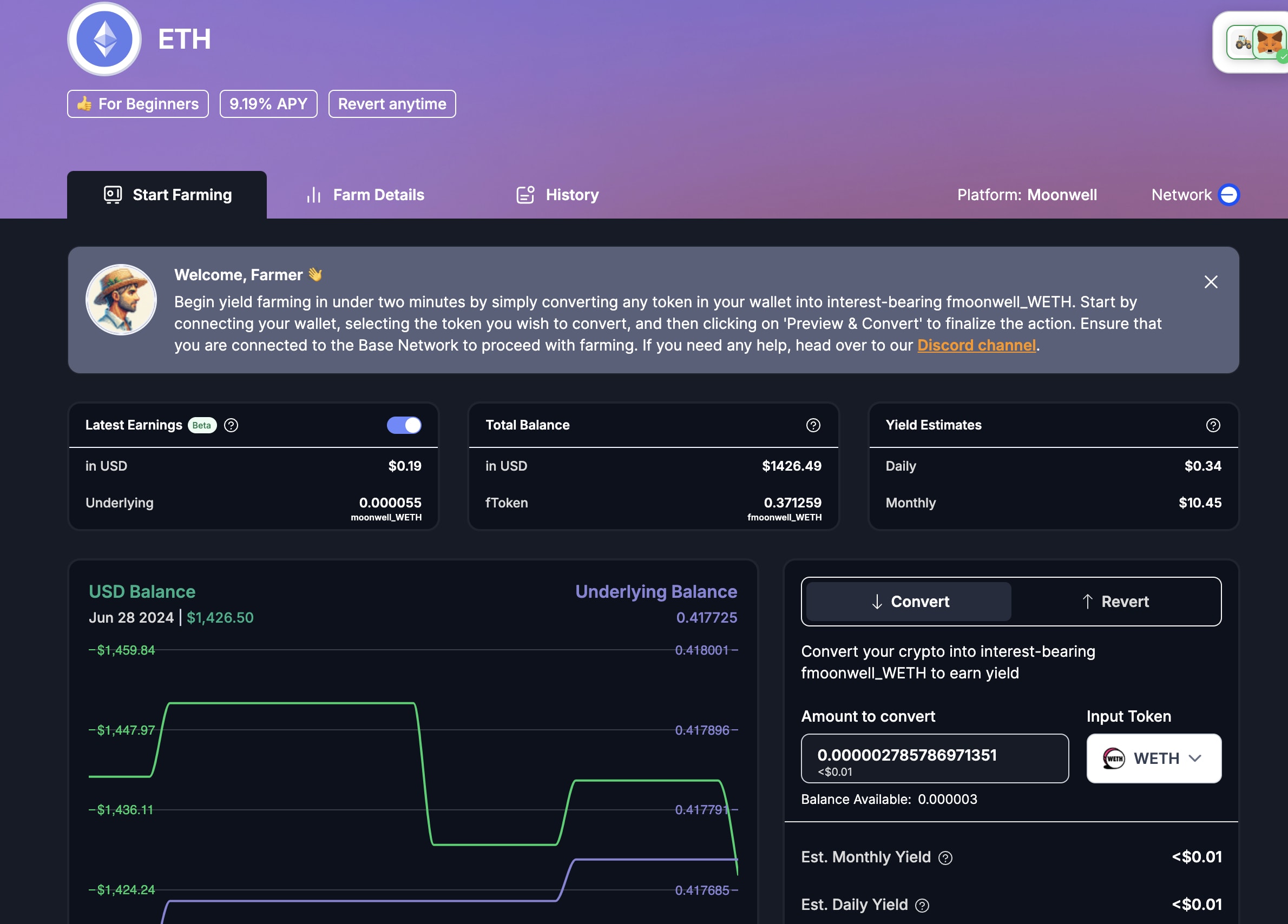
I'll walk through some of the basics of the UI, but their docs also do a great job of explaining concepts and the workflow: Site Unreachable
The core value of Harvest is its simplicity in doing the auto-compounding and making it easy to understand the market dynamics.
The above grid is brilliant and shows what my chart looks like after one day.
The purpose shows the underlying balance, which should slowly increase because as yield is earned, the corresponding primary asset, in this case ETH can eventually be redeemed. This is showing the number of units of that asset.
For someone who is long ETH I want to see this accumulate -- even without me adding capital.
The green line is the market value of their yield-seeking token. This goes up and down with the market value of the underlying asset it can be redeemed for. It's like a coupon that entitles me for additional ETH.
But as a result of this, because of the ETH exposure, goes up and down in price.
To add on top of it, their native harvest token could potentially also fluctuate in the market as a tradeable asset.
Finding Farms
I broke this up into two parts since I've been working through this over several weeks.
How to Select Farms - Part 1
Here is currently how I am going about selecting Farms (07/02/2024):
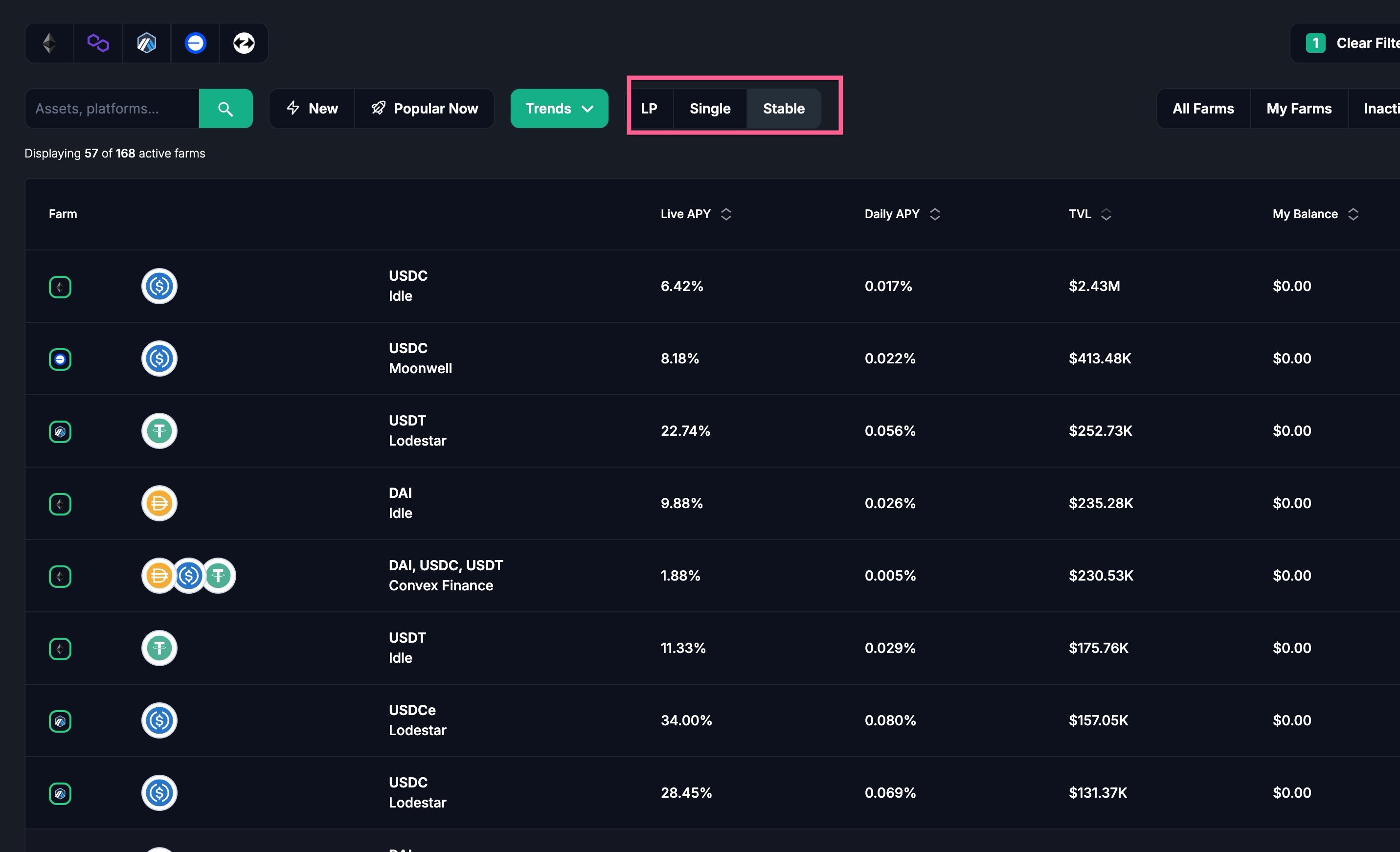
I have been spending time thinking first and foremost about my Portfolio Strategy in DeFi.
I include a snippet below:
Knowing the allocations helps provide a true north.
Note: I'm still on the hunt for the right set of tools for my Portfolio Management in DeFi. So many of the details will likely evolve over time.
But as of today, I'm using Google Sheets, and trying to come up with the right allocation.
Harvest has filters for three big buckets: LP, Single, and Stable.
- LP are Non Stable Pair liquidity provision Liquidity Pools.
- Single are usually a single asset put into Lending Protocols.
- Stable are Liquidity Pools but of Stable Coins - Research and Links.
These can be considered the primitives for most of DeFi, missing only Staking for Yield.
However, if the underlying asset is a staked asset (typically wstETH but I imagine there will be many others), then you're already participating in the staking.
However, there are different dimensions to coming up with the a Portfolio Strategy in DeFi.....and I haven't yet written that section yet (as of 07/02/2024) so just going along with things broadly right now.
For example, a strategy I have been exploring just within Harvest (versus my entire allocation across assets and protocols) right now looks like this:
| Strategy | Allocations |
|---|---|
| LP (Non Stable Pairs) | 30% |
| Single (Lending Protocols) | 30% |
| Stable (LP Stable Coins - Research and Links) | 40% |
There are a few considerations I made when determining these allocations:
- What is my goal (appreciation versus cash flowing from yield)
- Assets I want to hold long-term
- Assets I am okay with seeing a reduction in them in LP (due to Impermanent Loss)
Right now, my core assets outside of BTC are those I want to hold long term.
I don't know much about many other core assets besides ETH and SOL right now (and Harvest is only in the ETH ecosystem).
And because outside of Harvest, I may have other exposures, I'm using this, and treating Harvest more from a how do I maximize my yield/cash-flow perspective without exposing me to alot of risk (since I have risk in the core assets).
This will certainly evolve over time, but this is where I am starting.
Selecting Farms - Part 2
Now that I have this, let's work through these.
Here is the All Farms screen on Harvest:

I am looking at a few things (and still evolving my own strategy as of 06/28/2024)....
But I sorted this by the Live APY . Typically the listed yield percentage is just a signal at a point in time in a very volatile market.
Here is how Harvest describes it:
The Harvest smart contracts are an automated yield-farming solution that relies on third-party products and applications to provide sources of yield and their corresponding rates of return. All rates should be validated with the 3rd party protocol as there may be mistranslations of the rates of return provided by the 3rd party. Additionally, Harvest may "boost" the APY% of a given pool by adding
$FARMreward emissions to the overall earnings.
How the Yield is denominated can be confusing:
The stated APR/Y (the 'Rate') is denominated in terms of RELEVANT TOKEN, not USD or other fiat currency. The Rate is a forward-looking projection based on good faith belief of how to reasonably project results over the relevant period, but such belief is subject to numerous assumptions, risks and uncertainties (including smart contract security risks and third-party actions) which could result in a materially different (lower or higher) token-denominated APR/Y.
In other words, they are baking in assumption about the underlying token performance, which is largely speculative.
This may be confusing -- and it is -- and so it does involve thinking about the relative rates.
So let's start with the Single investments first.
Selecting Lending Farms (Singles)
So now I'm going to look at the Singles, and you'll see that many of them are Stable Coins - Research and Links that are being placed in Lending Protocols.
In many ways, this makes sense for the borrower to just pay an interest rate based on something Stable versus something Volatile.
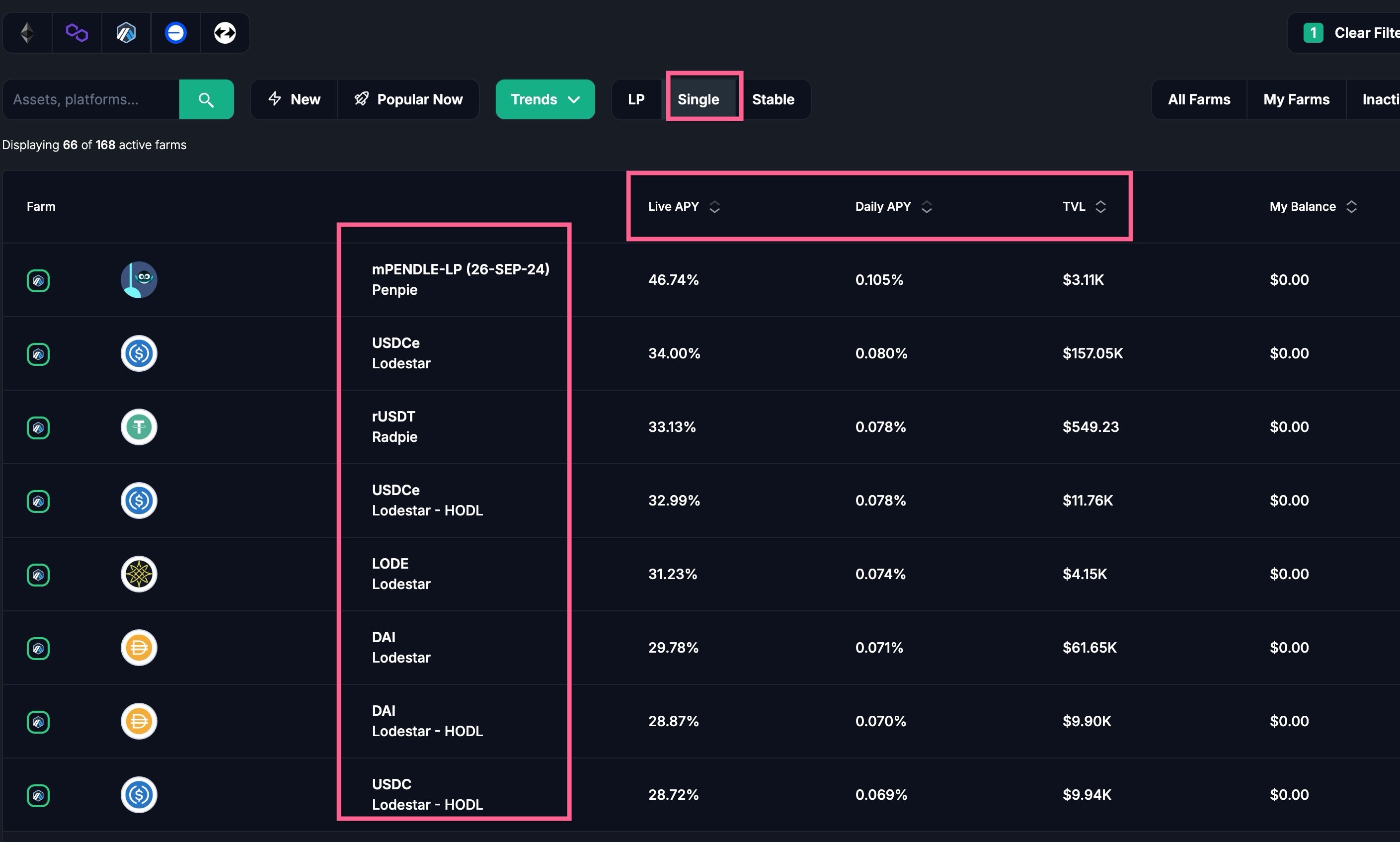
So I scan through these, based on the Live APY and TVL.
As noted above, most of the returns comes from rewards based on the lending protocol -- they want an incentive for those to provide collateral.
Lodestar is a lending protocol that is newer, so their APY for now is higher.
But it also means it's riskier.
However, I put some into it as part of my allocation.
But I need to also consider lending assets that I expect to continue to go up.
Here's an example where I am [staking](Staking for Yield) ETH, but also placing it into the FARM vault to increase that yield, which returns two tokens at the time of writing this (07/02/2024): $iFARM and $fLODE.

In this example, I have wrapped staked ETH as wstETH.
With an underlying asset of stETH I earn staking rewards, primarily fees paid to validators on which I am providing liquid stake.
It has been wrapped in order for it to compose to other protocols, like Harvest.
Under Harvest, there are Single farms which take a single asset and auto-compounds the yield.
For a staked asset, there are staking rewards. But as a single asset, there are also additional yield from lending on Aave or Curve.
In this case, the Harvest protocol takes the deposited asset and auto compounds both the staking rewards and lending rewards for single assets such as wstETH.
The auto-compounding is for the underlying assets. So in the case of wstETH, the rewards are additional wstETH. In the case of liquidity pairs, the compounding is in additional tokens represent the pairs.
However, for some assets, there are $iFARM rewards for staking in the Farm.

Example from Curve on Harvest
Let's take another example, this one on another protocol, Curve Protocol.
On Curve, there's a pool on Arbitrum which looks like this:
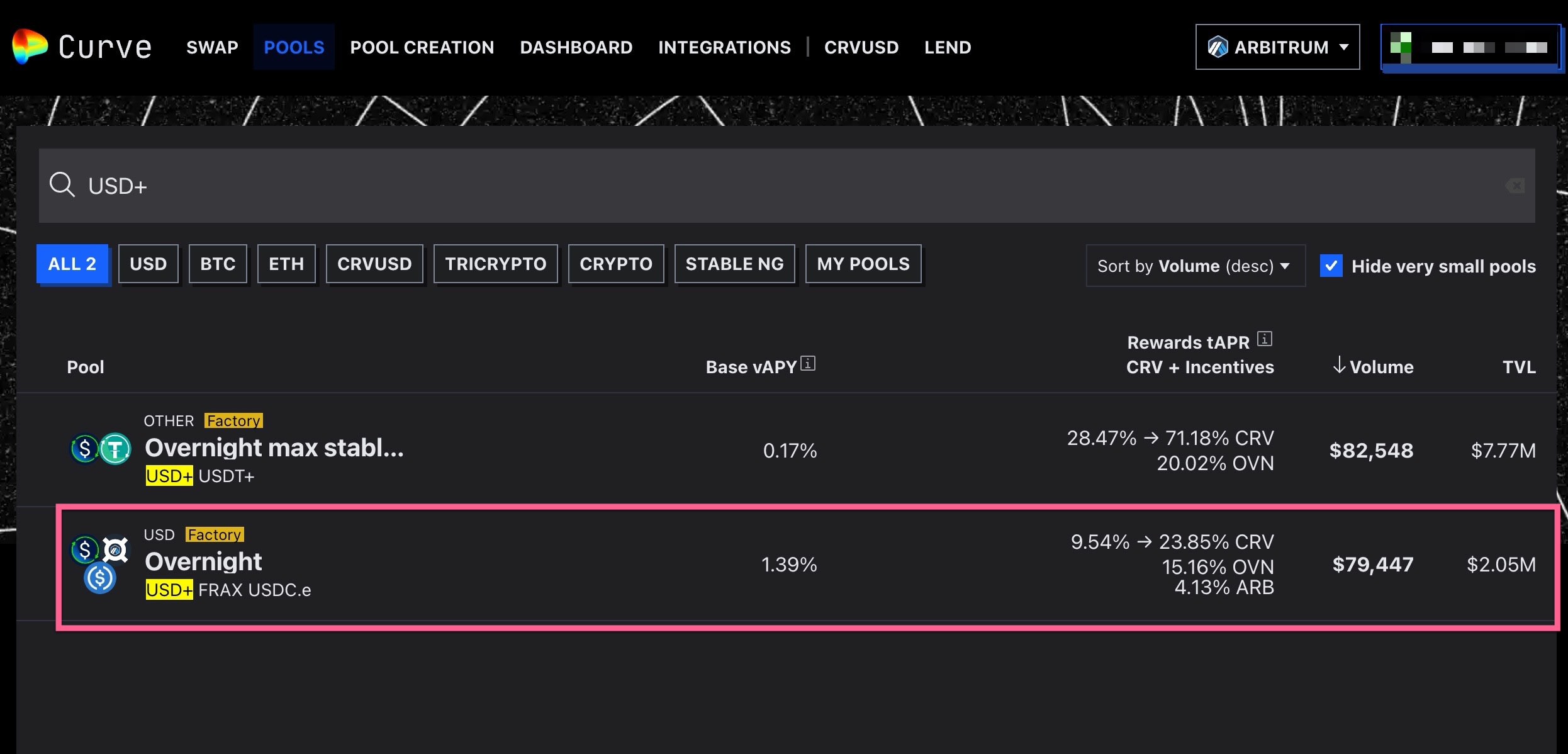
So the base APY at this time (07/03/2024) is 1.39% but there are rewards across 3 different assets, CRV, OVN, and ARB.
Harvest has a Farm with a similar pool:

The rewards in this case are for $iFARM and the yield is for auto-compounding back into the underlying assets: USD+, FRAX, and USDC.e.
How does Harvest make those incremental purchases?
From the Rewards of CRV, OVN, and ARB which are then resold to increase the value of the underlying.
The benefit is this approach auto-compounds into your core assets, reducing long-term exposure to the rewards.
But this could also be the downside if you would prefer to own OVN, CRV, and ARB.
Benefits and Risks of Auto Compounding
From